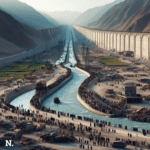Newly released figures by the Organization for Economic Co-operation and Development (OECD) show that developed countries have reportedly met the target of summoning US$100 billion in climate aid for developing countries. They collectively assembled US$115.9 billion for climate-related projects in 2022. Thus overtaking the target set in 2009 during COP15 in Copenhagen. This milestone is overshadowing by allegations of financial maneuvering and reallocation of existing aid.
Record Increase: Climate Aid Up by US$7.5 Billion
Touted as achieve in the year 2020, the target witnesses substantial funds. And it is characterizing by record rises in bilateral contributions and investments from multilateral development banks. Private sector finance mark a record rise of US$7.5 billion during the period, having comparatively stays dormant in previous years. This is the term for “largest year-on-year increase observe to date” about climate finance.
However, the Center for Global Development (CGD) did an assessment that would tell a different story. The estimation about US$27 billion of the reports increase in public climate funds since 2002 is destroy from existing development aid. In 2022 alone, about US$6.5 billion of climate finance is obtain through a reprogramming of resources. That is otherwise been allocat to other forms of bilateral development aid. This gives credence to the accusation that wealthy countries are merely repackaging existing aid allocations for climate purposes rather than committing new resources.
Climate Finance: ‘New and Additional’
The rub lies in the expectation that climate finance should, in UN climate negotiations, be “new and additional” to existing aid. A standard agreed upon, this is suppos to be met and upheld. CGD’s analysis reveals that some of the increase in climate finance in 2022. It is actually achieve by shifting existing money from other areas of development, including health and education. The very practice of meeting targets by enhancing them—though not genuinely increasing the financial aid pool—and it is critiqued and is at the core of it.
Ian Mitchell, a senior policy fellow at the CGD, expressed the issue most pointedly: “The intention is to provide ‘new and additional’ finance, and I think the very lowest bar for that is that the face value of [total] finance will gone up US$100 billion.” His words reflect the spirit in developing countries. Which consider this financial assistance vital for the realization of their climate goals under the Paris Agreement.
OECD: Loans Dominate Climate Finance
The report from OECD admits that about 69% of all public climate finance represents loans. This already brings some worry due to the high burden of debt developed by many countries worldwide. The substitution of grants by loans is even worst the financial liability of the nations. it is against the purpose of the climate aid is conceived.
COP29 Approaches, and Climate Finance Still Lacks a Definition
COP29 is approaching, which is expect to set a new climate finance target. This puts considerable pressure on developed countries to define their “climate finance” and confirm. future commitments are new and additional. Harjeet Singh, global engagement director at the Fossil Fuel Non-Proliferation Treaty Initiative, warned that rich countries are applying “creative accounting” methods to achieve their targets. Only a clear-cut definition of climate finance could help avoid this.
Conclusion
Once the US$100 billion target achieved, it actually becomes a entrance moment for historic importance. The methods of delivery of such aid have put the integrity and continuity of climate finance into question. With the international community looking up to COP29 in Baku, Azerbaijan, the demand for integrity and responsibility in financial commitments was never more pressing. The outcome of these very negotiations is likely to set the framework for the global approach. To climate finance for several years to come and will therefore determine. The prospects of effective global climate change combating paired with development needs in the global south.





